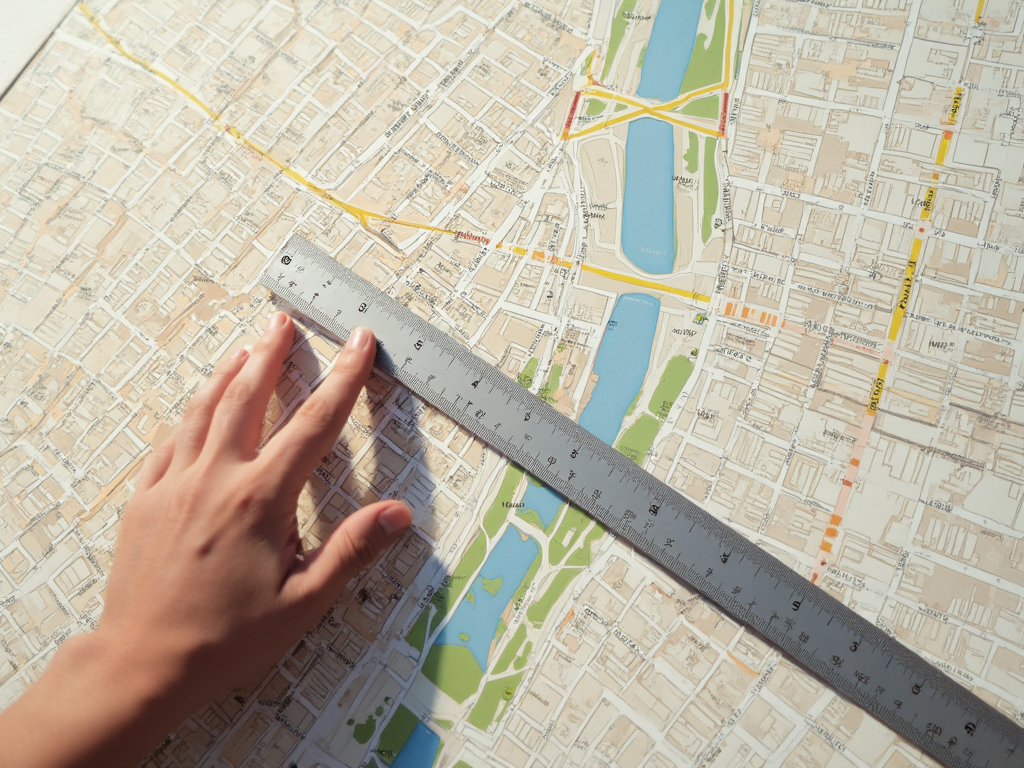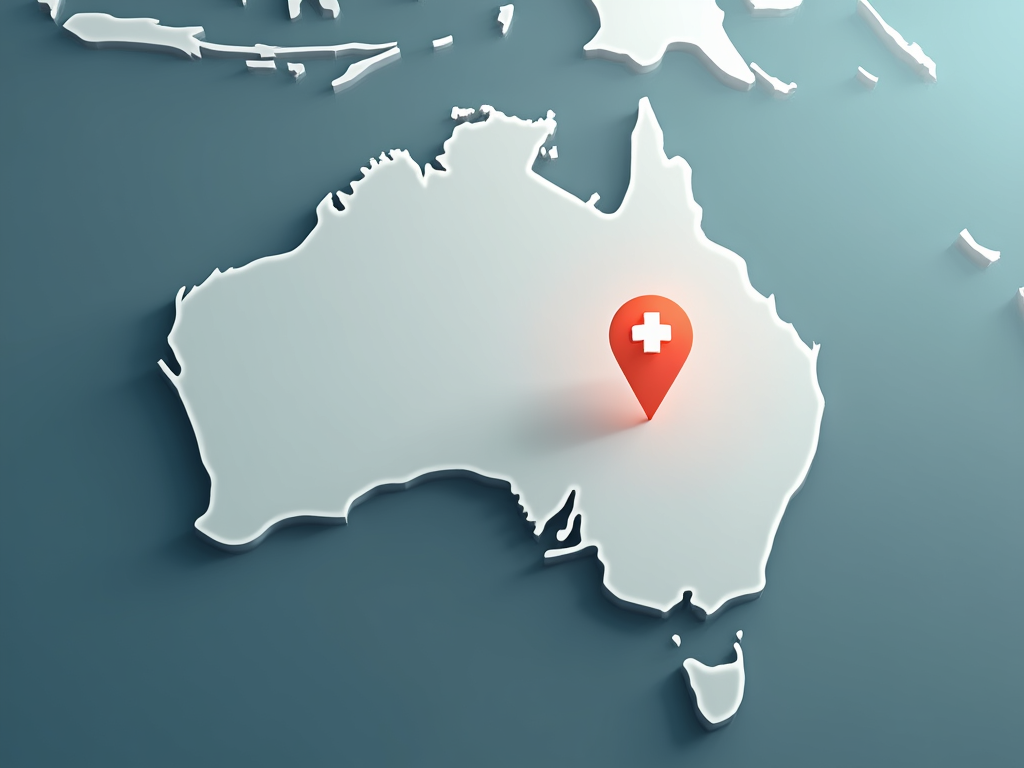Navigating Pharmacy Location Rules for New Pharmacies
Establishing a new pharmacy in Sydney can be both exciting and challenging, especially when navigating the Pharmacy Location Rules. These regulations, outlined in the Pharmacy Location Rules Applicant’s Handbook, ensure pharmacies are appropriately distributed, accessible, and compliant with legal and health standards. Whether you’re a pharmacist starting your first pharmacy or relocating an existing one, understanding these rules is crucial for a smooth approval process.
The Pharmacy Location Rules Applicant’s Handbook serves as a comprehensive guide for pharmacists seeking approval to supply pharmaceutical benefits under the Australian Government’s Pharmaceutical Benefits Scheme (PBS). It provides detailed guidance on the application process, requirements for approval, and the key regulations pharmacists need to follow. Published by the Australian Government Department of Health and Aged Care, the handbook is revised as needed to reflect any updates to the rules, ensuring pharmacists have the most current information at their disposal.
Key decisions regarding pharmacy applications are made by the Australian Community Pharmacy Authority (ACPA), which ensures compliance with the rules and makes recommendations to the Department of Health and Aged Care. The handbook plays a critical role in helping pharmacists navigate the complex process of establishing or relocating a pharmacy, ensuring equitable access to pharmaceutical services across Sydney and Australia.
In this blog post, we’ll explore 8 key insights from the Pharmacy Location Rules for New Pharmacies, ensuring your project meets all legal requirements and stays on track. At ImpeccaBuild, we’ve guided countless pharmacists in Sydney through this process, offering expert design, compliance, and fit-out services tailored to their needs. Let’s dive into the essential steps you need to know to get your pharmacy up and running in one of Australia’s most dynamic cities.
Disclaimer: The information provided in this blog is for general informational purposes only. For specific legal and regulatory guidance, always refer directly to the Pharmacy Location Rules Applicant’s Handbook (2024) or consult with legal experts to ensure full compliance with the latest regulations.
Master the Essential Location Guidelines
Why Pharmacy Location Rules for New Pharmacies Matter in Sydney

Importance of Pharmacy Location Rules
The Pharmacy Location Rules exist to ensure that pharmaceutical services are accessible to all Australians, and this is particularly critical in a city as diverse and populous as Sydney. These rules are designed to promote equitable access to medications by regulating the distribution of pharmacies, preventing clustering in densely populated areas while ensuring adequate service in under-serviced communities. For pharmacists, understanding these rules is essential not only to meet regulatory requirements but also to ensure that their new pharmacy meets the needs of the community they aim to serve.
Impact of Location Rules on Sydney-Based Pharmacies
In Sydney, the Pharmacy Location Rules play a crucial role in maintaining balance across the city’s urban and suburban areas. With a high population density in the city center and diverse communities in the surrounding suburbs, competition among pharmacies can be fierce. For example, areas like the CBD and inner suburbs might face oversaturation of pharmacies, while outer suburbs or growing regions could be under-serviced. The location rules prevent oversupply in any one area, ensuring that all parts of Sydney, from high-density urban environments to more sparsely populated regions, receive adequate pharmaceutical services.
These rules also take into account other healthcare providers in the area, such as hospitals and medical centers, making sure that pharmacies are placed strategically to serve both the general public and healthcare facilities effectively. By adhering to these guidelines, pharmacists can not only comply with regulations but also maximize their business potential by operating in areas that genuinely need pharmaceutical services.
Steps to Approval for New Pharmacies
The Application Process for New Pharmacies: Key Steps and Timelines

1. Submission of the Application
Whether you’re taking on a new partner, relocating an existing pharmacy, or opening a new one approved to supply pharmaceutical benefits, a pharmacist must apply for approval under section 90 of the Act (p. 5). Applications are submitted through the PBS Approved Suppliers Portal using the approved form. It’s essential that “all required information must be completed in the online form and all documents must be uploaded as attachments before submitting the application in the Portal” (p. 6). Ensuring that your application is accurate and complete from the outset helps avoid unnecessary delays or rejections.
2. Application Fees
Payment of the application fee is mandatory for the process to move forward. “Full payment of the application fee is required to allow the application to be progressed” (p. 7). Without this payment, the application will not be processed, so it is crucial to ensure the fee is submitted alongside your application to avoid delays.
3. Documentation
When submitting your application, it is critical that all required documents are provided. “All required information must be completed in the online form and all documents must be uploaded as attachments before submitting the application in the Portal” (p. 6). Additionally, “information received after an application has been submitted will not be accepted and will not be considered by the Authority” (p. 6). To avoid delays or the need for resubmission, ensure that all documentation is accurate and complete at the time of submission.
4. Processing and Validity Check
Once your application and payment are submitted, the Secretariat checks if the application is valid. If it’s invalid, the application will be returned via the PBS Approved Suppliers Portal, and you’ll receive an email explaining the reasons (p. 8). Resubmissions won’t incur additional fees, and the submission date is updated when resubmitted. Valid applications are issued a registration number and referred to the Authority for further review (p. 8).
5. Referral to the Authority
Once validated, applications receive a registration number and are referred to the Australian Community Pharmacy Authority (ACPA) for further consideration. “Valid applications are given a registration number and referred to the Authority” (p. 8). This registration marks the official start of the review process.

6. Authority Meetings and Timeframes
The Australian Community Pharmacy Authority (ACPA) meets 10 times a year to review applications, with meeting and lodgement dates available on the Authority’s webpage. These dates are subject to change, so applicants should always consult the website for the latest information. Applications must be lodged about 5 weeks before a meeting to allow time for processing and for nearby pharmacists to comment on the application (p. 9). Late applications or additional information after registration will not be accepted. If the Authority needs clarification, a decision may be deferred to a future meeting, so applicants should allow ample time between submission and their proposed opening date to avoid delays (p. 9).
7. Decision-Making and Outcomes
After the Australian Community Pharmacy Authority (ACPA) reviews your application, a decision will be made. If additional information is needed, “the Authority will email the applicant requesting additional information to be provided by a specified date” (p. 10). Failure to meet this deadline may result in further deferral or the recommendation that the application not be approved.
Meeting outcomes are published on the PBS Approved Suppliers Portal within 5 working days. For deferred applications, “the Secretariat will advise applicants of the Authority’s reason for deferral generally within 5 working days after the meeting” (p. 10). If your application is approved or not approved, you’ll be notified of the next steps or the reasons for rejection. “The department will advise applicants of the Authority’s recommendation and the further requirements for obtaining approval from the delegate” (p. 10).
Applicants who are not approved can request a statement of reasons within 28 days of receiving the notice, and the Authority has 28 days to provide the statement (p. 10).
8. Additional Information Requests
In some cases, the Authority may defer a decision and request additional clarification or documentation from the applicant. “The Authority may defer a decision and request clarification or additional information if needed” (p. 9). This step can prolong the process, so ensuring all information is clear and complete from the start is important.
Disclaimer: The information provided in this blog is for general informational purposes only. For specific legal and regulatory guidance, always refer directly to the Pharmacy Location Rules Applicant’s Handbook (2024) or consult with legal experts to ensure full compliance with the latest regulations.
Key Distance Rules for New Pharmacies
Pharmacy Location Rules: The 1.5 km and 10 km Distance Requirements

1. Overview of the Distance Requirements
The Pharmacy Location Rules include specific distance requirements designed to maintain a balanced distribution of pharmacies across communities. The two primary rules – the 1.5 km rule and the 10 km rule – ensure that pharmacies aren’t clustered too closely together, preventing oversaturation in some areas while ensuring underserved regions have access to essential pharmaceutical services.
These distance rules are in place to promote equitable access to healthcare services across both urban and rural settings. For pharmacists planning to establish or relocate a pharmacy, understanding and complying with these rules is essential to gaining approval and ensuring their pharmacy serves its community effectively.
2. The 1.5 km Distance Rule
The 1 km rule, outlined in Item 130 of the Pharmacy Location Rules Applicant’s Handbook, applies when relocating or establishing a new pharmacy in the same town or locality. According to the Pharmacy Location Rules, the proposed premises must be at least 1.5 km away from the nearest approved pharmacy, measured in a straight line. This measurement is taken from the mid-point at ground level of the public access doors of both premises (p. 33). If multiple doors exist, the measurement is taken from the nearest door to the other pharmacy.
Additionally, there are specific requirements regarding nearby amenities. The proposed pharmacy must be located within 500 meters of either a full-time medical practitioner and a supermarket with at least 1,000 m² of gross leasable area, or a supermarket with a gross leasable area of at least 2,500 m² (p. 33).
For applications where the distance to the nearest pharmacy is close to 1.5 km, a licensed surveyor’s report may be required. This report must include detailed measurements and methodology to confirm compliance with the distance rule, ensuring the distance is accurate and meets all requirements.
3. The 10 km Distance Rule
For a new pharmacy application under Item 131, the proposed location must be at least 10 km away from the nearest approved pharmacy, measured by the shortest lawful access route. This route can include walking, driving, or other legal means of travel but must be accessible to the general public, not just specialized groups.
If the distance is close to 10 km, a licensed surveyor’s report is required, detailing the route, methodology, and measurement. The shortest distance is measured from the mid-point of each pharmacy’s public entrance.
Additionally, general requirements apply, such as proving legal occupancy of the premises, ensuring the premises can operate as a pharmacy under local laws, and confirming public accessibility. It is also important to note that any pharmacy approved under this rule cannot relocate outside the town where the approval was granted (Pharmacy Location Rules, pp. 36-37).
Shopping Centre Rules for New Pharmacies
Pharmacy Location Rules: New Pharmacies in Shopping Centres

For new pharmacy applications in shopping centres, specific requirements apply based on the size of the centre:
Small Shopping Centres (Item 133):
The pharmacy must be located at least 500 metres away from the nearest approved pharmacy (excluding those in large shopping centres or private hospitals) and be the only pharmacy in the centre. Evidence required includes a floor plan and a statutory declaration confirming the centre is under single management, has at least 5,000 m² of gross leasable area, contains at least 15 commercial establishments, and has customer parking (Pharmacy Location Rules, pp. 42-45).
Large Shopping Centres (Item 134):
In large centres (5,000 m²+), a pharmacy may be established if no other approved pharmacy exists. Supporting evidence must confirm that the centre is under single management, contains a supermarket of at least 2,500 m², and includes at least 50 commercial establishments (Pharmacy Location Rules, pp. 45-49).
If relocating a pharmacy within these centres, restrictions apply. A pharmacy approved under these items cannot relocate outside the centre for 10 years without exceptional circumstances.
New Pharmacy Rules for Healthcare Facilities
Special Location Rules for New Pharmacies in Medical Centers and Hospitals

Large Private Hospitals (Item 135):
To establish a new pharmacy in a large private hospital, the hospital must admit at least 150 patients at any one time, and there should be no existing pharmacy within the hospital. Applicants must provide a statutory declaration and hospital documentation confirming these details, including the hospital’s licence and a floor plan showing the proposed pharmacy’s location (Pharmacy Location Rules, pp. 50-52).
Large Medical Centres (Item 136):
For a new pharmacy in a large medical centre, the centre must not have an existing pharmacy, and it must be at least 300 metres away from other pharmacies. Additionally, the medical centre must have at least eight full-time PBS prescribers, seven of whom must be medical practitioners. Applicants need to provide detailed evidence, including a statutory declaration from the centre’s management, confirming its operation hours and the number of PBS prescribers (Pharmacy Location Rules, pp. 52-55).
If relocating, the pharmacy must remain within the same hospital or medical centre unless exceptional circumstances arise.
Secure Your New Pharmacy’s Success
Conclusion: Navigating Pharmacy Location Rules for Success

Understanding and adhering to the Pharmacy Location Rules, whether for general premises or specific shopping centers, is crucial to securing approval for your new pharmacy. The distance requirements and shopping center rules ensure a balanced distribution of pharmaceutical services across communities, while also offering opportunities for growth in key areas.
At ImpeccaBuild, we understand the complexities of opening a new pharmacy and are here to help you create a pharmacy space that meets your business needs while adhering to regulatory requirements. From efficient layouts to compliant designs, our team is committed to delivering high-quality fit-out solutions.
Ready to bring your pharmacy vision to life? Contact us today to discuss how we can help with your pharmacy fit-out project and ensure your space meets all the necessary standards for success.
Disclaimer: The information provided in this blog is for general guidance only and should not be considered legal or professional advice. For specific details regarding the Pharmacy Location Rules or to ensure compliance with all relevant regulations, please refer to the Pharmacy Location Rules Applicant’s Handbook or consult a legal professional. ImpeccaBuild is not responsible for any actions taken based on the information provided in this article.
FAQ
Frequently Asked Questions
What are the Pharmacy Location Rules in Australia?
The Pharmacy Location Rules are regulations set by the Australian Government that determine where new pharmacies can be established or existing pharmacies can be relocated.
How far apart must new pharmacies be under the Pharmacy Location Rules?
New pharmacies must generally be at least 1.5 km from the nearest existing approved pharmacy, with some exceptions for rural areas requiring a 10 km distance.
Can I open a new pharmacy in a shopping centre?
Yes, but specific rules apply depending on the size of the shopping centre and whether there are existing pharmacies. Small shopping centres (5,000-30,000 m²) and large shopping centres (over 30,000 m²) have different requirements.
What are the requirements for relocating an existing pharmacy?
Requirements vary based on the relocation distance but generally include being in the same town, meeting distance criteria from other pharmacies, and having legal right to occupy the new premises.
How long does the pharmacy approval process take?
The Australian Community Pharmacy Authority (ACPA) generally meets 10 times per year to consider applications. The process can take several months from submission to decision.
What evidence is needed for a pharmacy location application?
Evidence typically includes floor plans, lease agreements, council approvals, distance measurements, and proof of accessibility to the public.
Can I open a pharmacy inside a medical centre or hospital?
Yes, but specific rules apply. For medical centres, they must have at least 2,000 m² of floor space and 8 full-time equivalent prescribing doctors. Hospitals must have at least 150 patient beds.
How close can a pharmacy be to a supermarket?
Pharmacies cannot be directly accessible from within a supermarket under the Pharmacy Location Rules.
You Might Also like:
If you enjoyed reading this blog, you may also be interested in:
- 6 Hidden Risks Of Buying Without A Pre-Purchase Inspection
- Pre-Purchase Building Inspection Cost Sydney: 6 Ways To Save
- Residential Pre-Purchase Inspections: 10 Powerful Benefits
- Local Cafe Fitout Expert Sydney: 6 Smart Reasons to Choose Local
- Choosing a Cafe Fitout Company Sydney: 5 Expert Tips for Success
- Cafe Fitout Costs Sydney 2024: Simple Tips for Maximum Savings
- Location Impact on Pharmacy Fit-Out Costs: 6 Shocking Truths
- Pharmacy Location Rules for New Pharmacies: 8 Approval Insights
- Reducing Pharmacy Fit-Out Costs: 5 Powerful Ways to Save Big
- 7 Critical Questions to Ask a Pharmacy Fit-Out Company Before Hiring
